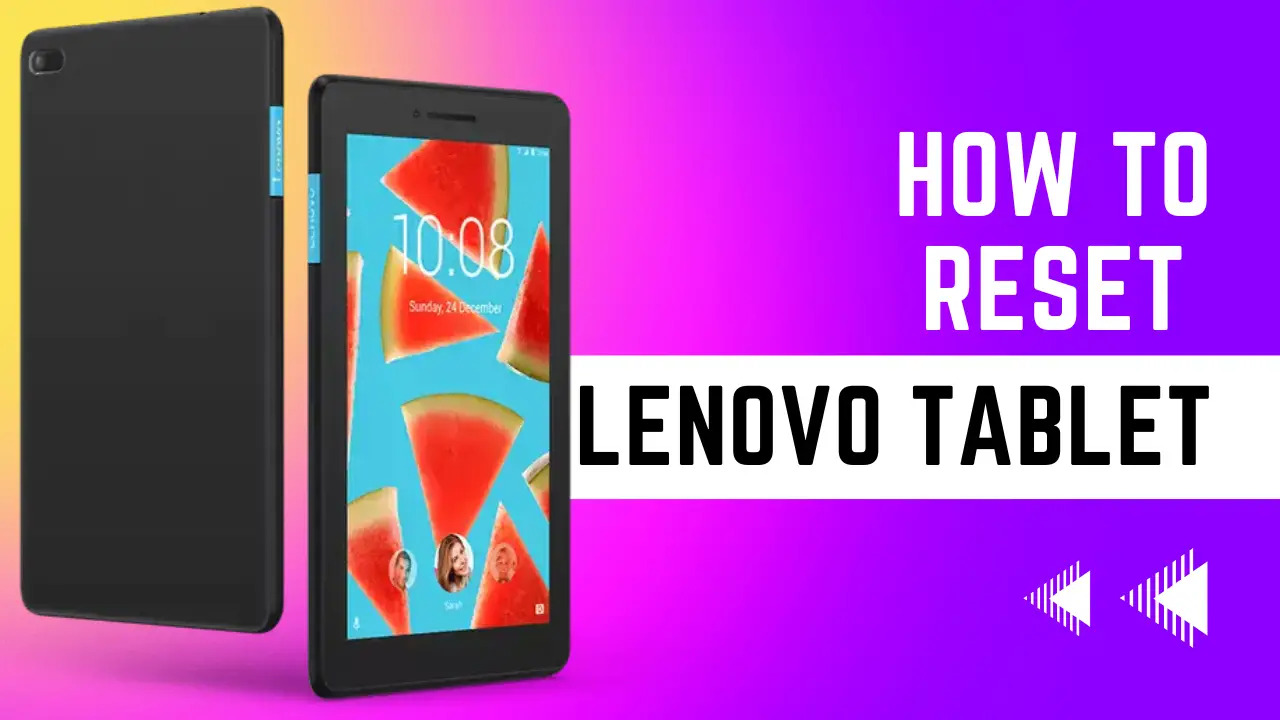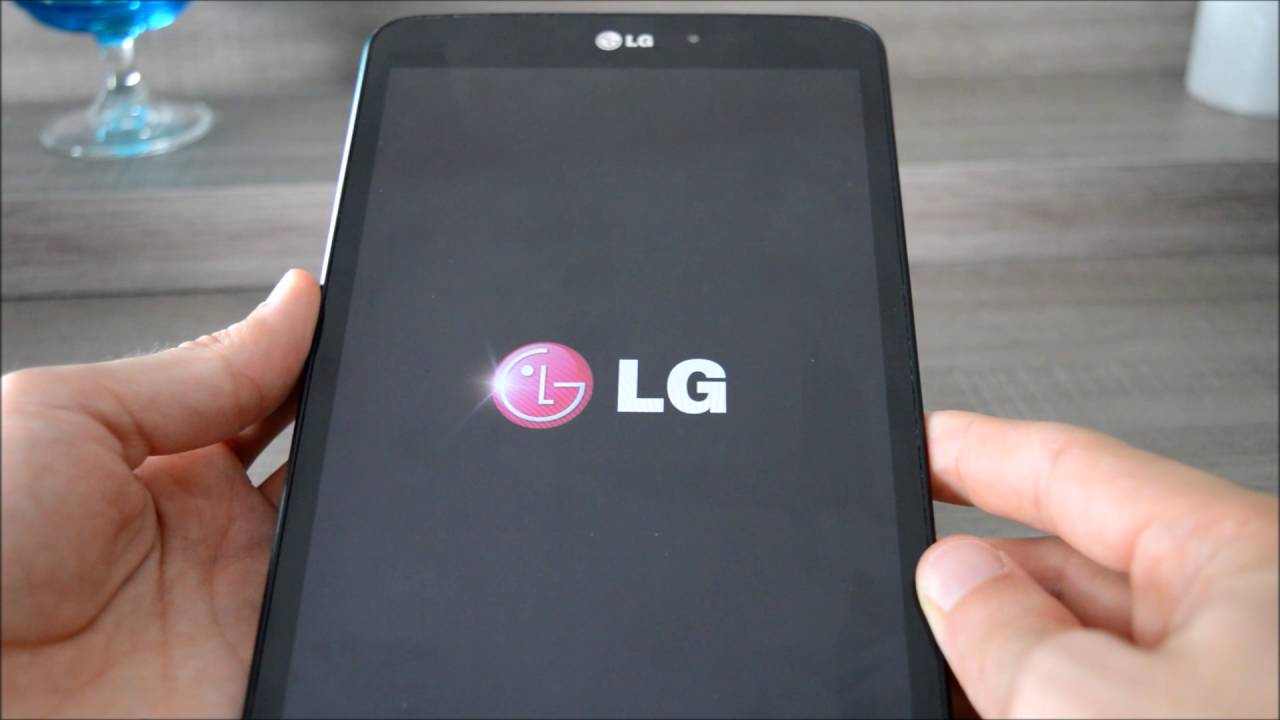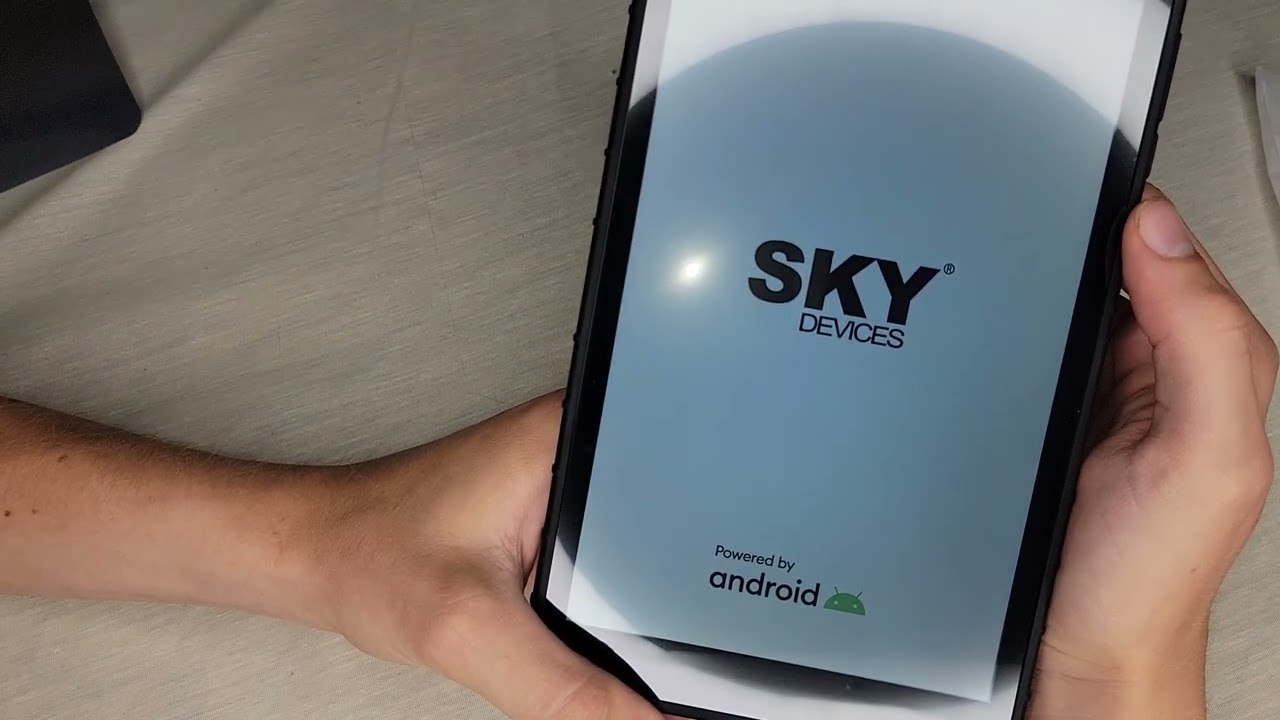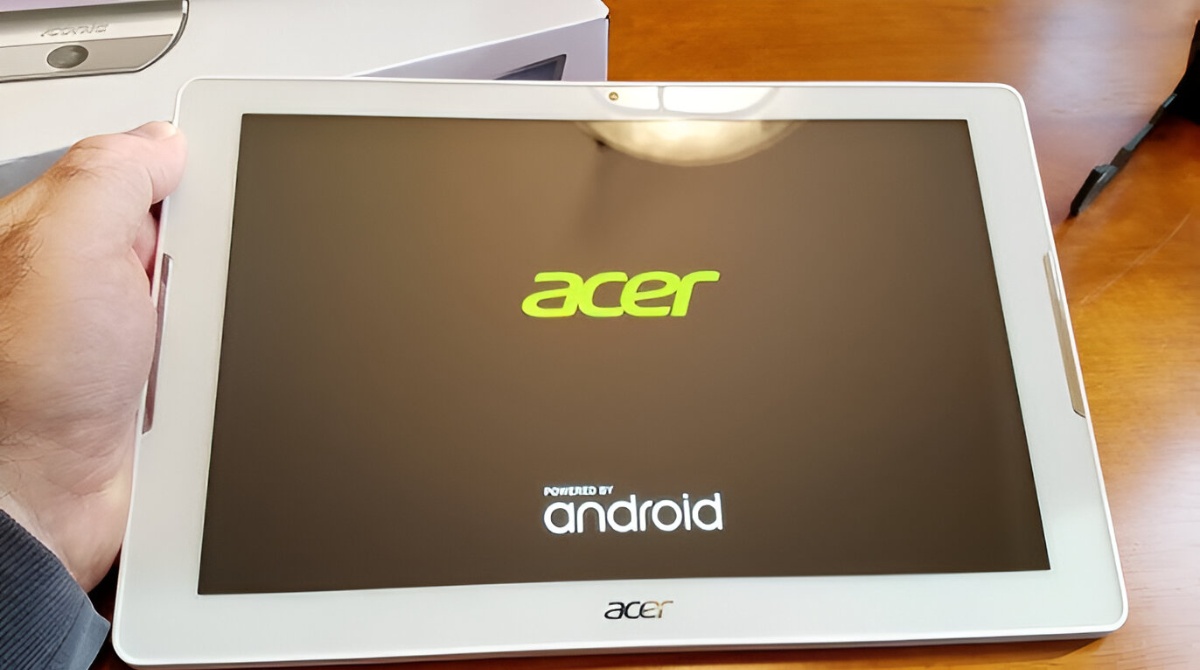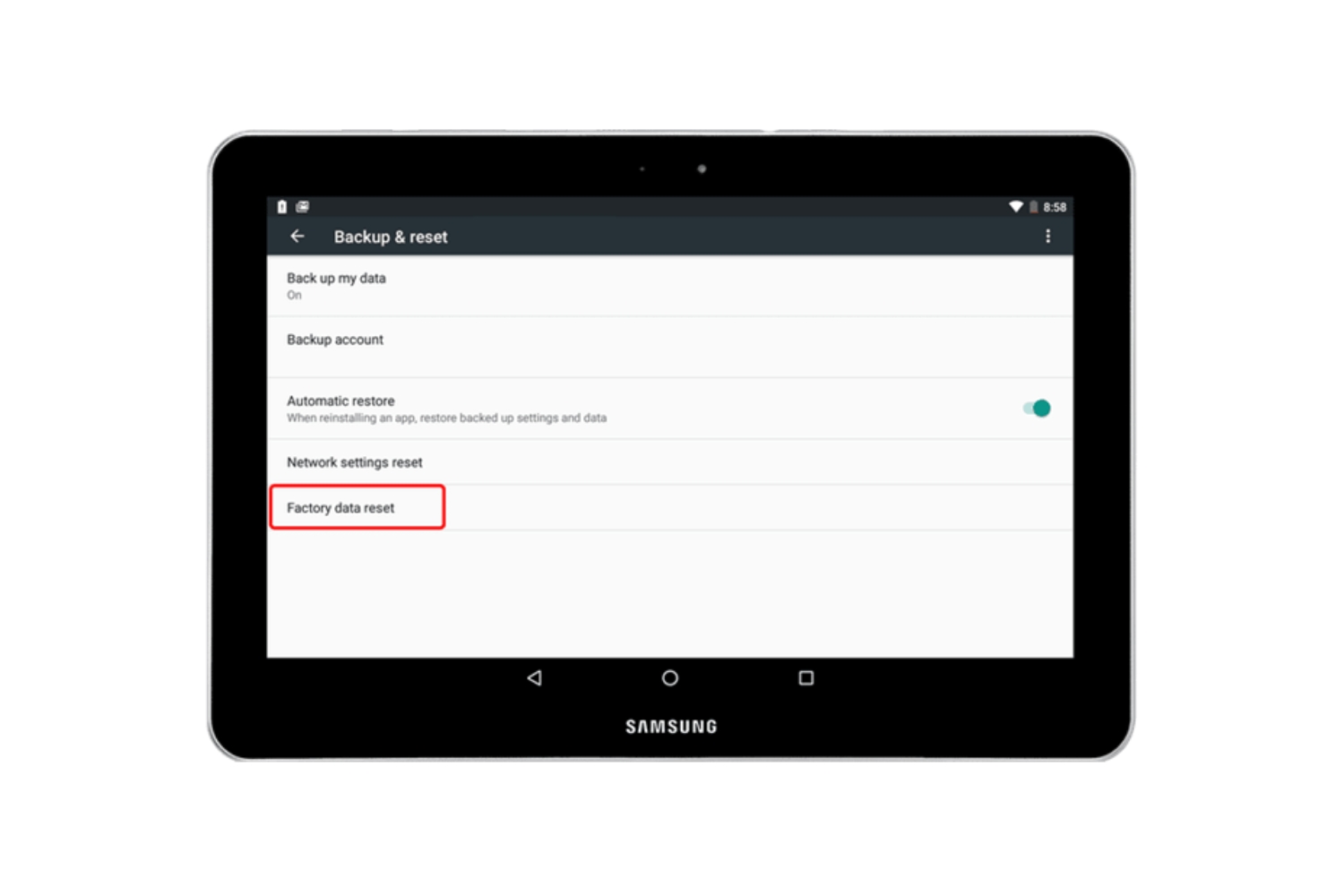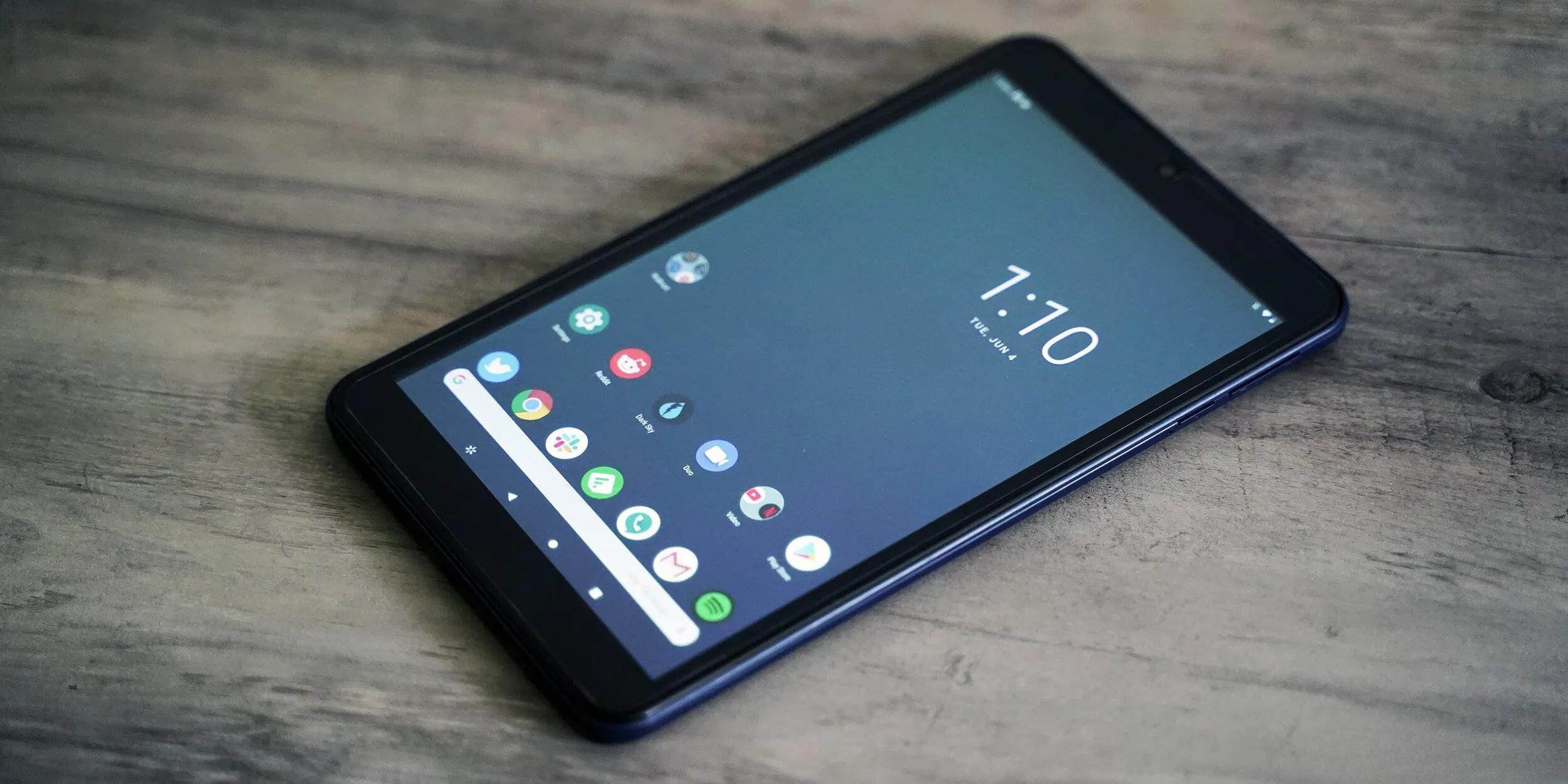Introduction
Resetting a tablet can be a useful solution to various issues and can help optimize its performance. Whether you’re experiencing software glitches, sluggishness, or want to start fresh with a clean slate, a reset can often resolve these problems. This article will guide you through the process of resetting a tablet, including different methods for different operating systems.
A tablet reset is like pressing the restart button on a computer; it restores the device to its default settings. It erases all installed apps, user data, and configurations, giving you a clean and fresh start. It’s important to note that performing a reset will permanently delete your data, so it’s crucial to backup any important files or documents beforehand.
There are two primary types of resets: a soft reset and a factory reset. A soft reset is a quick and easy process that restarts your tablet without deleting any data. It can be useful for resolving minor software issues or frozen screens. On the other hand, a factory reset is a more comprehensive option. It erases all the data on your device and restores it to its original factory settings. A factory reset is suitable for more serious software problems or when you want to prepare your tablet for sale or donation.
In the following sections, we will explore the different methods to perform a soft reset or a factory reset on various tablet operating systems like Android, iOS, and Windows. We will also discuss common troubleshooting steps to help you overcome any issues that may arise during the reset process. So, whether you’re dealing with a sluggish tablet or simply want to start fresh, this guide will provide you with the knowledge and steps to reset your tablet effectively.
Reasons to Reset a Tablet
There are several reasons why you might consider resetting your tablet. Here are some common scenarios where a reset can be advantageous:
1. Performance Issues: Over time, your tablet may become slow or unresponsive. This can be caused by accumulated temporary files, outdated software, or conflicting apps. Performing a reset can help improve the overall performance and responsiveness of your tablet.
2. Software Glitches: Software glitches can cause various problems such as app crashes, freeze-ups, or unresponsive touchscreens. A reset can help fix these issues by clearing out any corrupted system files and resetting the software to its default state.
3. Storage Space Optimization: If your tablet is running out of storage space, resetting it can free up valuable memory. By removing unnecessary apps, files, and cached data, you can reclaim storage space and improve the efficiency of your tablet.
4. Security Concerns: Resetting your tablet can also be a security measure, particularly if you plan to sell or donate the device. Performing a factory reset ensures that all your personal data, accounts, and configurations are completely erased, protecting your privacy and preventing unauthorized access to your information.
5. Starting Fresh: Sometimes, you may want to start afresh with your tablet. This could be if you’ve changed your usage preferences, want to personalize the device with a new set of apps, or simply want to get rid of any clutter. Resetting your tablet allows you to begin with a clean slate, tailor it to your current needs, and make it feel like a brand-new device.
6. Troubleshooting: If you’re facing persistent issues that you can’t resolve through other means, a reset could be the solution. It can help eliminate any software-related problems and provide a fresh foundation for troubleshooting further, ensuring a more accurate diagnosis and potential resolution.
Resetting a tablet may not be necessary for every issue, but it can be an effective solution in many cases. However, it’s essential to back up your data before performing a reset to ensure you don’t lose any valuable information. In the following sections, we will explore the different methods and steps to reset a tablet on various operating systems.
Backing up Your Data
Before proceeding with a tablet reset, it’s crucial to back up your data to prevent the loss of important files, photos, and documents. While some resets such as a soft reset do not erase data, a factory reset will erase all the data on your tablet. Here are a few methods to ensure your data is safely backed up:
1. Cloud Storage: Cloud storage services like Google Drive, Dropbox, or iCloud offer an easy and convenient way to store your files securely. You can upload your photos, videos, and documents to the cloud and access them from any device with an internet connection. Ensure that you have enough storage space or consider upgrading your plan if needed.
2. External Storage: If your tablet supports external storage such as an SD card, you can transfer your files to it. Copying important files, documents, and media onto an external storage device ensures that they are not affected during the reset process. Just make sure to properly eject the external storage before removing it from the tablet.
3. Computer Backup: Connect your tablet to a computer using a USB cable and transfer your files to a designated folder on your computer’s hard drive. This method allows you to create a local backup that you can easily restore to your tablet after the reset.
4. Syncing with Apps: Many apps offer syncing capabilities to ensure your data is backed up automatically. For example, email accounts, contacts, calendars, and notes can be synced with cloud-based accounts such as Gmail or Microsoft Exchange. Make sure you’ve enabled syncing for the relevant apps to safeguard your data.
By backing up your data, you can restore your important files and settings after the tablet reset, ensuring a seamless transition without any loss. Remember to double-check your backups and verify that all your essential data is successfully saved and accessible before proceeding with the reset process.
In the upcoming sections, we will explore the specific steps to perform a soft reset or a factory reset on different tablet operating systems like Android, iOS, and Windows. These steps will guide you through the process and help you achieve a successful reset.
Factory Reset vs. Soft Reset
When it comes to resetting a tablet, there are two primary methods to consider: a factory reset and a soft reset. Understanding the differences between these two options will help you choose the most appropriate method to address your specific needs. Let’s take a closer look at each:
Factory Reset: As the name suggests, a factory reset restores your tablet to its original factory settings. This means that all data, apps, settings, and configurations will be erased from the device. It essentially takes your tablet back to the state it was in when you first purchased it. Performing a factory reset is a more comprehensive process and should be used when you want to start fresh, troubleshoot persistent issues, or prepare your tablet for sale or donation.
Soft Reset: A soft reset, also known as a restart or reboot, is a simpler process that involves restarting your tablet without deleting any data. It can be used to resolve minor software issues, frozen screens, or unresponsive apps. A soft reset is akin to turning your device off and back on again, refreshing the system without removing any personal data or customized settings.
So, how do you decide which reset method to use? Here are some general guidelines:
– Use a soft reset when you encounter minor issues like app freezes or unresponsive touchscreens. This method allows you to quickly restart your tablet without losing any personal data or customizations.
– Opt for a factory reset when you’re facing more persistent or serious problems, such as frequent crashes, slow performance, or significant software glitches. A factory reset wipes your tablet clean, giving you a fresh start and potentially resolving these issues.
– If you plan to sell or donate your tablet, a factory reset is recommended. Performing this reset ensures that all your personal data is completely erased, protecting your privacy and preventing unauthorized access to your information.
It’s important to note that performing a factory reset will erase all data, so it’s crucial to back up any important files before proceeding. On the other hand, a soft reset does not delete any data, making it a convenient option for quick troubleshooting.
In the next sections, we will delve into the specific steps required to perform a soft reset or a factory reset on different tablet operating systems such as Android, iOS, and Windows.
How to Perform a Soft Reset
A soft reset, also known as a restart or reboot, is a simple method to resolve minor software issues or temporarily fix unresponsive apps or frozen screens on your tablet. Unlike a factory reset, a soft reset does not erase any data or settings. Here’s how you can perform a soft reset on your tablet:
1. Android: On most Android tablets, you can perform a soft reset by pressing and holding the power button for about 10-15 seconds. This will force the device to shut down and restart. Alternatively, you can try using the restart option in the power menu, which can usually be accessed by holding down the power button and selecting “Restart” or “Reboot.”
2. iOS (iPad/iPhone): To perform a soft reset on an iOS tablet, press and hold both the home button and the power button simultaneously for about 10-12 seconds. Keep holding both buttons until you see the Apple logo appear on the screen. Release the buttons, and your tablet will restart.
3. Windows: On a Windows tablet, you can perform a soft reset by pressing and holding the power button for about 10-15 seconds. This will force the device to power off. Wait for a few seconds and then press the power button again to turn your tablet back on.
After performing a soft reset, your tablet should restart and hopefully resolve any minor software-related issues. If the problem persists, you may need to consider other troubleshooting steps or opt for a factory reset as a more comprehensive solution.
It’s worth noting that the specific steps to perform a soft reset may vary slightly depending on the tablet model and operating system version. If you’re unsure of the exact method for your tablet, you can refer to the user manual or search for specific instructions online.
Now that you know how to perform a soft reset, let’s move on to the next section where we will explore the steps to perform a factory reset on different tablet operating systems.
How to Perform a Factory Reset
A factory reset restores your tablet to its original factory settings, erasing all data, apps, and settings. It should be used when you want to start fresh, troubleshoot persistent issues, or prepare your tablet for sale or donation. Here’s how you can perform a factory reset on different tablet operating systems:
1. Android: On most Android tablets, you can perform a factory reset by going to the “Settings” menu. Look for the “System” or “System and Updates” option, then select “Reset” or “Reset Options.” Choose the “Factory Data Reset” or “Erase All Data” option, and confirm your selection. Note that the exact steps may vary slightly depending on the tablet model and Android version.
2. iOS (iPad/iPhone): To perform a factory reset on an iOS tablet, go to the “Settings” menu and select “General.” Scroll down and tap on “Reset.” Choose the “Erase All Content and Settings” option and confirm your selection. You may be prompted to enter your passcode and Apple ID password before proceeding.
3. Windows: On a Windows tablet, open the “Settings” menu and select “Update & Security.” Choose the “Recovery” option and click on “Get Started” under the “Reset this PC” section. Follow the on-screen instructions to proceed with the factory reset. Note that the specific steps may vary depending on the Windows version and tablet model.
Before performing a factory reset, it is crucial to back up your data to avoid permanent loss. Remember that a factory reset will erase all data on your tablet, including apps, photos, documents, and personalized settings. Once the reset is complete, your tablet will be restored to its original factory settings.
It’s important to note that the exact steps and options may vary slightly depending on the tablet model and operating system version. If you’re uncertain about the specific instructions for your tablet, refer to the user manual or search for device-specific guidelines online.
After performing a factory reset, your tablet will be set up as if it were brand new. You will need to go through the initial setup process, reconfigure settings, and reinstall apps and data from your backup if desired.
In the next sections, we will delve into the specific steps to reset a tablet on different operating systems like Android, iOS, and Windows. These steps will guide you through the process and help you achieve a successful reset.
Resetting an Android Tablet
Resetting an Android tablet can help resolve software issues, improve performance, or start fresh with a clean slate. Here’s how you can reset an Android tablet:
1. Soft Reset: To perform a soft reset on most Android tablets, press and hold the power button for about 10-15 seconds. You will see the screen turn off and then back on as the tablet restarts. This method is useful for addressing minor software issues or frozen screens without deleting any data.
2. Factory Reset: To perform a factory reset, you can follow these steps:
– Open the “Settings” app on your Android tablet. You can usually find it in the app drawer or by swiping down from the top of the screen and tapping on the gear-shaped icon.
– Scroll down and select the “System” option or look for “System and Updates” depending on your Android version.
– Tap on “Reset” or “Reset Options” and choose the “Factory Data Reset” or “Erase All Data” option.
– Read the warning message and confirm your selection. You may be required to enter your device PIN, password, or pattern.
– Finally, tap on “Reset” or “Erase Everything” to initiate the factory reset process.
Keep in mind that the exact steps may vary slightly depending on the tablet model and Android version. It’s recommended to back up your data before performing a factory reset to avoid permanent loss.
After the factory reset is complete, your Android tablet will be restored to its original factory settings. You will need to go through the initial setup process, including signing in to your Google account and reinstalling any desired apps.
If your Android tablet has a physical home button, you can also try a hardware-based method to access recovery mode and perform a factory reset. The steps vary for each device, but it typically involves turning off the tablet, then holding a specific combination of buttons (such as volume up + power) to access the recovery mode options.
Remember, performing a factory reset will erase all data on your Android tablet, so it’s crucial to back up any important files or documents before proceeding. Once the reset is complete, you can enjoy a fresh and optimized Android tablet experience.
In the next sections, we will explore the specific steps to perform a reset on iOS and Windows tablets, helping you reset your tablet effectively.
Resetting an iOS Tablet
If you’re using an iOS tablet, such as an iPad or iPhone, you have a couple of options to reset your device, depending on your needs. Here’s how you can reset an iOS tablet:
1. Soft Reset: To perform a soft reset on an iOS tablet, follow these steps:
– Press and hold both the home button and the power button simultaneously for about 10-12 seconds.
– Keep holding the buttons until you see the Apple logo appear on the screen.
– Release the buttons, and your tablet will restart.
A soft reset is useful for addressing minor software issues, frozen apps, or unresponsive screens without deleting any data.
2. Factory Reset: To perform a factory reset, also known as an “Erase All Content and Settings,” follow these steps:
– Open the “Settings” app on your iOS tablet.
– Tap on “General” from the list of options.
– Scroll down and select “Reset.”
– Choose the “Erase All Content and Settings” option.
– You may be prompted to enter your device passcode and Apple ID password to proceed.
– Confirm your selection, and your iOS tablet will begin the factory reset process.
Performing a factory reset will erase all data and settings on your iOS tablet, so it’s crucial to back up your data before proceeding to avoid permanent loss.
Once the factory reset is complete, your iOS tablet will be restored to its original factory settings. You will need to go through the initial setup process, including signing in to your Apple ID and configuring your preferences. You can then restore your data from a backup or set it up as a new device.
It’s worth noting that the exact steps and options may vary slightly depending on the iOS version and specific tablet model you’re using. If you need detailed instructions for your particular iOS tablet, you can refer to the Apple support website or consult the user manual.
Resetting an iOS tablet can help optimize performance, troubleshoot software issues, or prepare the device for sale or donation. Remember to back up your data before performing any reset to avoid data loss.
In the next section, we will explore how to reset a Windows tablet, providing you with the necessary steps to reset your device effectively.
Resetting a Windows Tablet
If you’re using a Windows tablet, resetting the device can help resolve software issues, improve performance, or start fresh with a clean slate. Here’s how you can reset a Windows tablet:
1. Soft Reset: To perform a soft reset on a Windows tablet, follow these steps:
– Press and hold the power button on the tablet for about 10-15 seconds.
– The tablet will shut down completely.
– Wait for a few seconds, then press the power button again to turn on the tablet.
A soft reset is useful for addressing minor software issues or unresponsive apps without deleting any data or settings.
2. Factory Reset: To perform a factory reset, also known as a “Reset this PC,” follow these steps:
– Open the “Settings” app on your Windows tablet. You can access it from the Start menu or by using the Windows key + I shortcut.
– Select the “Update & Security” option from the settings menu.
– Click on the “Recovery” tab on the left-hand side.
– Under the “Reset this PC” section, click on the “Get Started” button.
– Choose between the “Keep my files” or “Remove everything” option. Selecting “Remove everything” will delete all files, apps, and settings on the tablet.
– Follow the on-screen instructions to proceed with the factory reset.
Performing a factory reset on a Windows tablet will delete all personal files, apps, and settings, so it’s crucial to back up your data before initiating the reset process.
Once the factory reset is complete, your Windows tablet will be reset to its original factory settings. You will need to go through the initial setup process, including signing in to your Microsoft account and configuring your preferences. Afterward, you can reinstall your apps and restore your files from your backup if desired.
It’s important to note that the exact steps and options may vary slightly depending on the Windows version and specific tablet model you’re using. If you need detailed instructions for your particular Windows tablet, you can refer to the Microsoft support website or consult the user manual.
Resetting a Windows tablet can be a solution for troubleshooting software issues, improving performance, or preparing the tablet for resale or donation. Remember to back up your data before performing any reset to avoid permanent loss.
In the next section, we will discuss some common troubleshooting steps for any issues that you may encounter during the reset process.
Troubleshooting Common Issues during the Reset Process
While resetting a tablet can generally resolve software-related issues, you may encounter some common problems during the reset process. Here are some troubleshooting steps to help you overcome these issues:
1. Frozen Screen: If your tablet’s screen becomes unresponsive during the reset process, try a soft reset by pressing and holding the power button for at least 10 to 15 seconds. This should force the tablet to shut down and restart. If the problem persists, check for any physical damage or contact your device manufacturer for further assistance.
2. Battery Issues: If your tablet’s battery is critically low, it may not have enough power to complete the reset process. Connect your tablet to a power source and ensure that it is charging before attempting the reset again.
3. Connectivity Problems: In some cases, a stable internet connection may be required to complete the reset process. Ensure that your tablet is connected to a reliable and active Wi-Fi network before initiating the reset. If the Wi-Fi connection is weak or intermittent, try moving closer to the router or restarting your modem and router.
4. Error Messages: If you encounter an error message during the reset process, take note of the exact error message and try searching for solutions online. Many error messages have specific troubleshooting steps that can help you overcome the issue. If you’re unable to find a solution, contact the tablet manufacturer or seek assistance from a technical support professional.
5. Slow Performance: In some cases, the reset process may appear to be taking longer than expected. This is normal, especially for a factory reset, as it involves erasing and reinstalling the entire operating system. However, if the process appears to be stuck for an extended period, try restarting your tablet and initiating the reset again.
If you continue to experience issues during the reset process, it’s recommended to consult the user manual specific to your tablet model or contact the manufacturer’s customer support for further guidance. They will be able to provide you with more specific troubleshooting steps based on your device’s specifications.
Remember to exercise caution during the reset process and ensure that you have backed up any important data before proceeding. With patience and appropriate troubleshooting steps, you can successfully complete the reset and enjoy the benefits of a refreshed tablet.
Now that you are equipped with troubleshooting knowledge, let’s conclude our guide by summarizing key points and highlighting the importance of resetting a tablet when needed.
Conclusion
Resetting a tablet can be an effective solution to various software-related issues, sluggish performance, or the need for a fresh start. Whether you choose to perform a soft reset or a factory reset, it’s important to understand the differences between these methods and their potential effects on your device.
A soft reset is a quick and simple way to restart your tablet, resolving minor issues without deleting any data. On the other hand, a factory reset restores your tablet to its original factory settings and wipes all data and settings. This is a more comprehensive process suitable for troubleshooting persistent issues or preparing the tablet for resale or donation.
Before initiating a reset, it’s crucial to back up your data to prevent any permanent loss. Cloud storage, external storage devices, or computer backups are some options to consider for securely storing your data.
The process of resetting a tablet varies depending on the operating system. Android tablets can be reset through the settings menu, while iOS tablets can be reset through the settings or by using specific button combinations. Windows tablets offer both soft and factory reset options through the settings menu.
During the reset process, it’s not uncommon to encounter issues such as frozen screens, connectivity problems, or error messages. Troubleshooting steps like performing a soft reset, ensuring a stable internet connection, or seeking technical support can help overcome these challenges.
By following the appropriate steps and troubleshooting guidance, you can successfully reset your tablet and enjoy a refreshed device, optimized performance, and potential resolution of software-related issues.
Remember to refer to your tablet’s user manual or consult the manufacturer’s support resources for precise instructions and device-specific guidance.
Now you have the knowledge and instructions to confidently reset your tablet. So, the next time you encounter software problems or want to start fresh, don’t hesitate to perform a reset and give your tablet a new lease on life.







